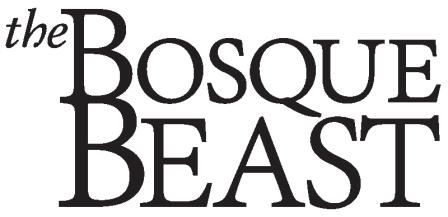
When it comes right down to it,
there are only two methods
Dogs—we love them! We invite them into our homes and even our beds. We spend billions of dollars a year on them. We buy, adopt, rescue, breed them. We just can’t get enough of dogs. Anyone who’s ever had a dog can tell you stories about them, and likely has an opinion about training them.
If you have a dog with “issues,” you’re likely to get advice from a guy at the dog park, your grocery clerk, and your mechanic. People will tell you, “I’ve had dogs all my life…,” as if having teeth makes you a dentist! To make matters worse, there are trainers on TV, a slew of books, and many online resources that offer conflicting approaches and advice.
How do you know what is right for your dog? At their core, training philosophies boil down to a choice between correction-based training and reward-based training. Let’s look at the evolution of this choice.
Natural companions
Our history with dogs is long and complex. We share many characteristics that make us natural companions. I like to think people enjoyed the company of dogs even when practicality required that they serve a purpose. In many cases, human survival was aided by a dog doing a job—primarily herding, hunting, retrieving, and guarding. I’m sure there was some training involved, but for the most part dogs were doing what came naturally to them and what they were bred for. It was a natural balance.
World War II changed everything—how people earned a living, where we lived, how we ate, and the lives of our dogs as well. War rationing of food gave us grain-based kibble. Urbanization left many working dogs unemployed. And dog-training methods employed by the military found their way into our homes through the influence of trainers like Bill Koehler and Blanche Saunders.
This is also when the “dominance theory” came into vogue. A study of wolves in captivity found that wolves formed packs led by an alpha male and female who maintained their dominance by forcing others in the pack into submission. This theory was extrapolated to dogs, so we were told to use techniques like the “alpha roll,” “scruff shake,” and “chin clip” (popularized by the Monks of New Skete) to dominate our dogs. We were indoctrinated in the belief that we must always “be the alpha” when dealing with our dogs. This attitude meshed well with the punitive methods popularized by military-style dog training.
That style, now commonly referred to as traditional training, relies heavily on use of the “training collar”—a choke chain, pinch/prong collar, or shock collar—and a 6-foot leather lead. Dogs would be sent to obedience school when they were 6 months old—strong enough to withstand the “corrections” used in training. Handlers were taught to give “commands” that the dog must obey to avoid receiving a “correction.” These traditional training methods could be quite harsh, and many dogs “failed” obedience school because they couldn’t handle the stress and physical punishment. Their responses were to either “fall apart”—urinate, cower, cry, freeze up—or “fight back” by growling, biting, or attacking. The dogs that fought back were often subjected to even harsher training, as the humans were told they must “win” and “dominate.” Not only were such training methods hard on the dogs, they were hard on the humans as well, requiring brute strength and physical confrontations, which sometimes led to owners being bitten and dogs dying.

Enter science
Research has since debunked the dominance theory, as modern studies have shown that wild wolf “packs” are actually family units. Submissive-type behaviors are offered rather than demanded, and there is little violence among family members. While many similarities persist between dogs and wolves (as between humans and apes), dogs are not wolves. We must be cautious in applying wolf theories to dogs, and it would be wise not to put ourselves in positions of physical confrontation with dogs. Even with young and small dogs, just because we can overpower them doesn’t mean that we should.
Fortunately for us and our dogs, further research has brought us out of the dark ages of dog training. In the 1970s and ’80s, marine mammal trainers started going public with what they had learned. They quickly realized that any sort of “correction” on a killer whale could result in failure or injury to the trainer, and they had to find another approach. Karen Pryor’s book Don’t Shoot the Dog, published in 1984, revolutionized our understanding of the science of learning, and applied to anything with a brainstem. Enter the positive training movement.
A complete change in attitude followed. Dogs were now given “cues” instead of commands, and the primary correction, if any, was lost opportunity to earn a reward. If a killer whale could be taught to do a back flip using only a whistle and a bucket of sardines, then surely our dogs could be taught basic manners without the use of a training collar. But basic manners are just the beginning of what dogs have been taught using “positive” training methods.
In its simplest terms, traditional military-style training hinges on inhibiting (“correcting”) undesirable behaviors: If the dog remains standing when told to sit, the leash is “popped” to “correct” the mistake. Positive training works instead by rewarding desirable behaviors: If the dog sits when asked, a treat and/or praise is given as a reward. Both methods can work, but each has pros and cons.

Correction-based Training
Pros: Fast results if effective, simple concept if applied correctly.
Cons: High probability of “fallout” (dog becomes fearful or aggressive), physically taxing on dog and handler, requires physical strength to make corrections, requires special collar, tendency for handler to become “correction-happy” and jerk the dog without cause, may permanently damage dog-human relationship, damage to dog’s neck/throat common, ineffective and abusive if done with poor timing or technique.
Reward-based Training
Pros: Much of it can be done “hands-free” by anyone, long-lasting, fosters cooperation and respect, no special equipment, little risk if done with poor timing or technique, generally fun and pleasant for dog and handler.
Cons: May take longer to accomplish certain goals, requires patience and precision from handler, requires training.
Given that dogs can learn without force, fear, pain, or intimidation, in a way that lasts longer than traditional methods while fostering more trusting, cooperative relationships with our dogs, why do we persist in “correction”? Why are traditional obedience classes still common? Why is the public fascinated by TV trainers who advocate correction methods based on the dominance theory?
Reward-based training requires a huge paradigm shift. Whether you (like me) see dogs as spiritual beings in dog bodies, or as “just dogs,” these creatures share the planet with us and deserve to be treated with kindness and respect. There is no reason to use pain, fear, force, or intimidation when less invasive and less aversive methods work as well. But it takes effort to break old habits and open ourselves up to seeing the world from another point of view, especially of another species. Examining our history, our motives, and our desires can be terribly taxing.
Yet it’s astonishing that in a culture that strongly defends its freedoms (including the right to “own” dogs) and recognizes the need to protect those who can’t protect themselves through laws prohibiting animal cruelty and abuse, little abuses happen daily right under our noses that we overlook as “training.” Choke and prong collars, even those that deliver an electric shock, are available everywhere and condoned for use in the name of training under a range of euphemisms: slip chain, power steering, nick, tap, buzz, tickle.
If training collars are your primary means of communication and control, you may feel powerless to control or train your dog once they are gone. Good! That will prompt you to search for new options. When I first made the switch away from traditional training, it took me a full year to break myself of the habit of grabbing for the collar any time I felt the need to reposition my dog. That feeling of helplessness was instrumental in learning to communicate better and actually teach my dogs words for the things I needed from them—inside, outside, wait, touch my hand, move out of my way, etc.

Start by observing
Dogs do what works for them. If barking at the door gets you to let them out, they will keep barking at the door. If barking at the door never gets your attention, eventually your dog will give it up in favor of a more rewarding behavior. Behavior that is not rewarded tends to fade away. It follows that you can’t really teach a dog what not to do, only what to do. Make a point to notice what your dog is doing right—those are behaviors you want to reward. Your dog will let you know if your training efforts are working.
Positive training is not—to be clear—passive or permissive. It takes a great deal of attention and discipline to be consistent, active, and creative when it comes to raising our dogs with positive methods. It’s easy, and perhaps reflexive, to just yell “No!” It takes knowledge and discipline to be proactive and patient.
But where knowledge ends, violence begins. Every time a person yells at a dog, yanks a collar, or swats a rump, they demonstrate that they have reached the limits of their knowledge and understanding.
The more appropriate first response to dog problems, then, is to educate yourself. The Culture Clash by Jean Donaldson and The Power of Positive Dog Training by Pat Miller are great places to start. To live in harmony with dogs and treat them humanely, we must learn how they “work” and apply the science of learning effectively. Just as our society continues to shift away from corporal punishment in childrearing, the day is sure to come when such methods are no longer accepted or advocated with dogs.
As a dog trainer, I believe it can’t happen soon enough.
